Slobot About Town CXXIII:
 |
 |
The Flight of Jefferson Davis, pt. 01!
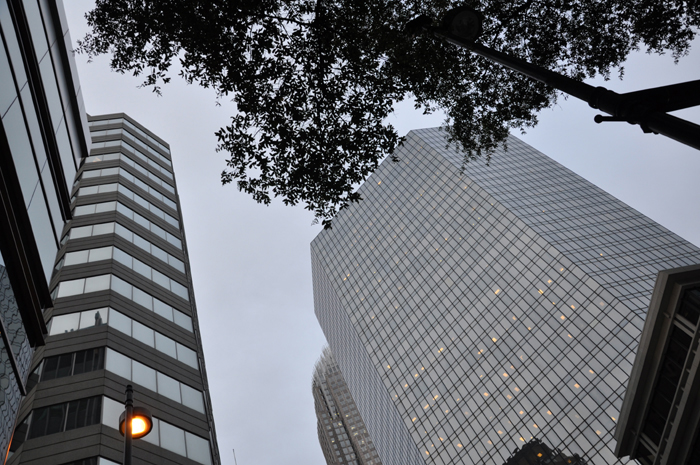
Below the towers of the Queen City...
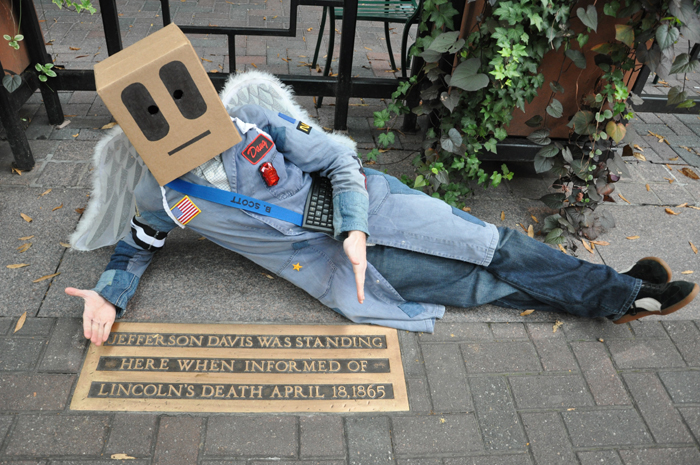
sprawled a disoriented Slobot. At Slobot's side was a plaque...
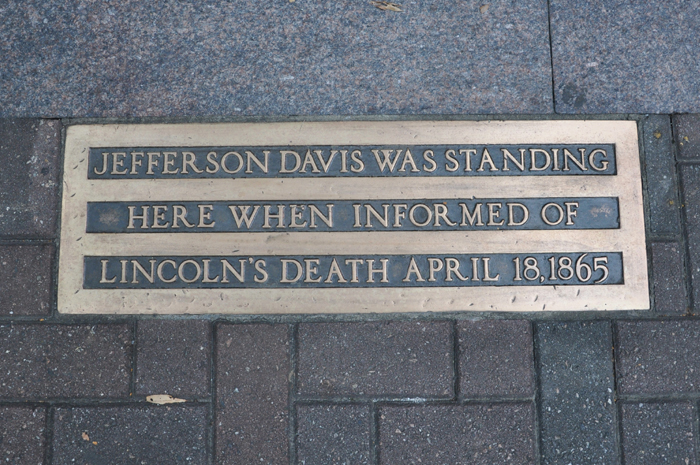
a plaque that told the tale of how - on April 18, 1865 - Jefferson Davis had been giving a speech to the people of Charlotte, North Carolina. During this speech Davis was handed a telegram that told of Lincoln's death. Half a mile from where Davis learned of Lincoln's death stood the home of George H. Phifer. It would be at Phifer's home that Davis would hold the last full meetings of his cabinet from April 22-26. |
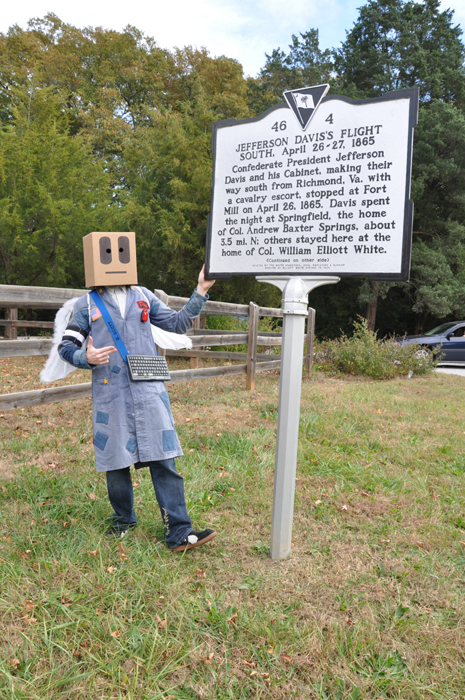
Following these meetings Davis would continue his flight south from the Union-held Richmond, Virginia. That flight had begun on April 4, 1865 when General Lee warned Davis that the Army of Northern Virginia could no longer defend Richmond. |
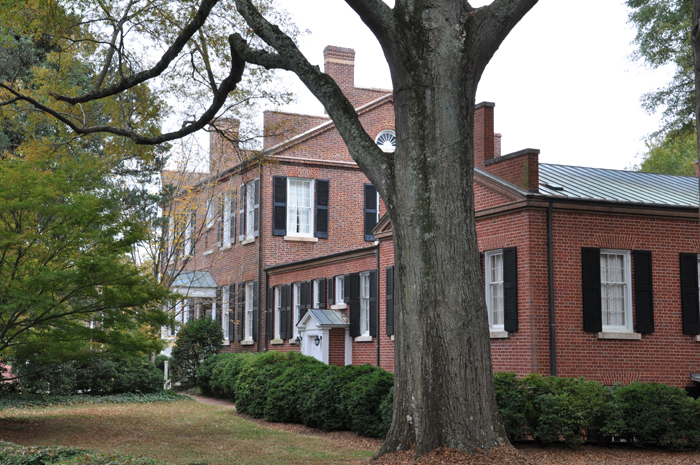
Davis and his entourage spent the night of April 26, 1865 at Fort Mill, SC. Some of Davis' company slept at the Col. William Elliott White House... |
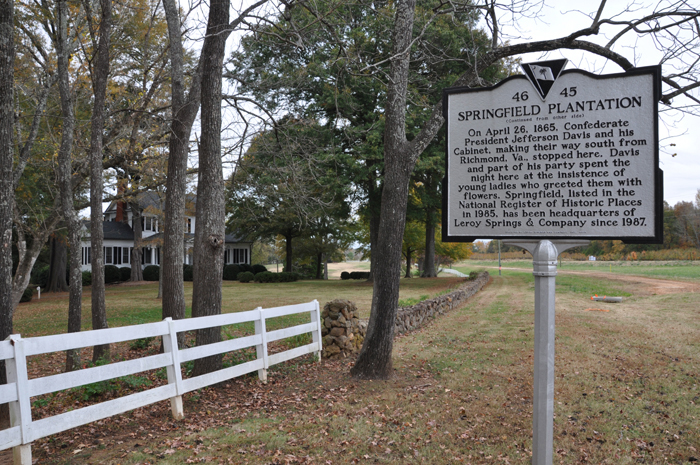
while Davis spent the night about 3 1/2 miles away at the Springfield Plantation.
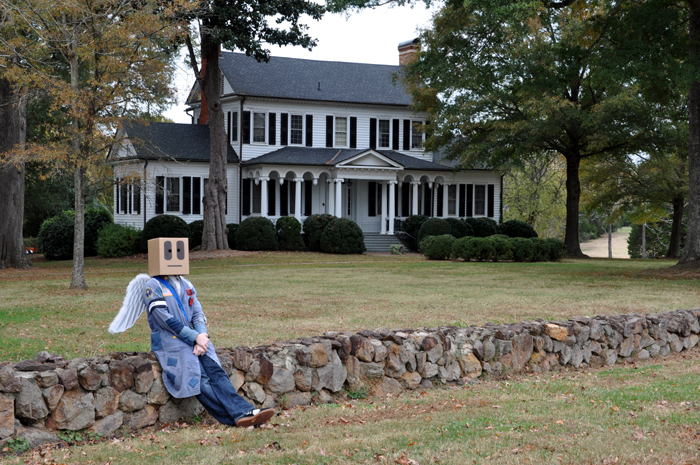
Springfield was built ~1806 by John Springs III (1782-1853). Springs served in the S.C. House from 1828 to 1834 and was a partner in several banks, railroads and textile mills prior to the Civil War. John Springs' son, Col. Andrew Baxter Springs (1819-1886), enlarged and remodeled the house in the 1850s. Andrew Baxter Springs served in the S.C. House from 1852 to 1856 and was a delegate to the Secession Convention. |
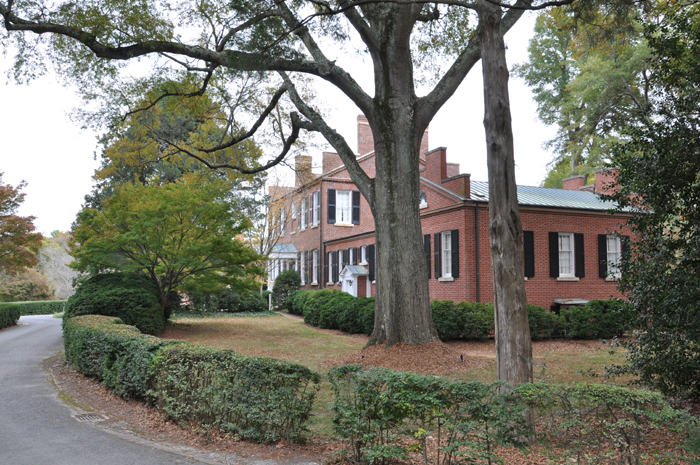
On the morning of April 27, 1865 Jefferson Davis would meet with his Cabinet and traveling companions back at the home of William Elliott White. |
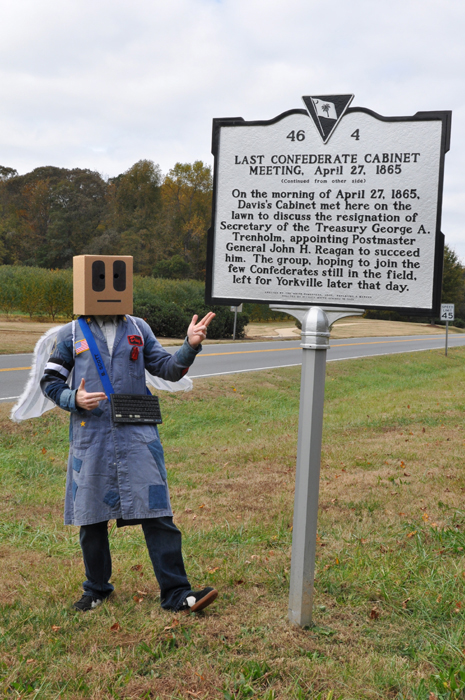
There, on the lawn of White's house, Postmaster General John H. Reagan was tapped to take the place of outgoing Secretary of the Treasury George A. Trenholm, who had resigned his post due to ill health. |
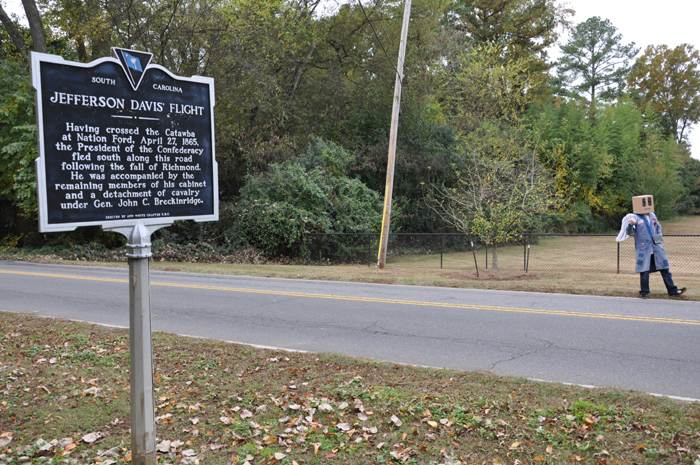
Following their meeting Jefferson Davis and his entourage continued their flight and crossed the Catawba River at Nation Ford. |
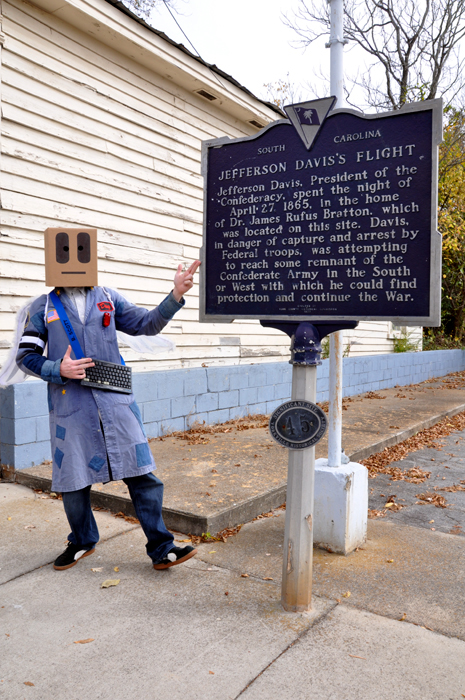
On the night of April 27, 1865 Davis and company slept at the home of Dr. James Rufus Bratton, a surgeon in the Confederate Army. The house was razed in 1956. |
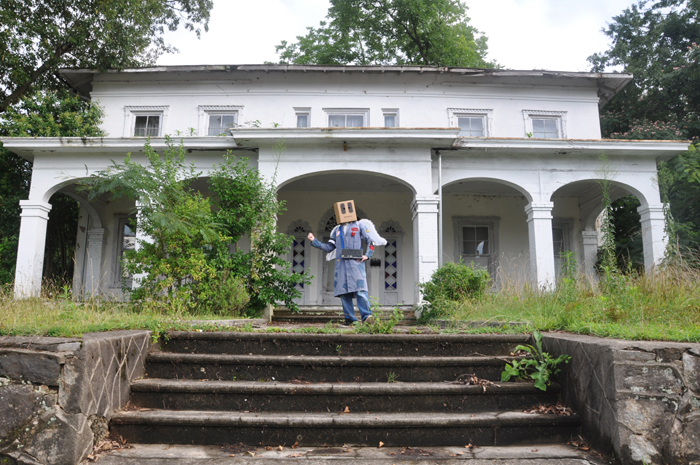
At noon on April 28, 1865 Jefferson Davis and company stopped and lunched in Unionville (now Union) at the home of General William Henry Wallace (1827 - 1901). |
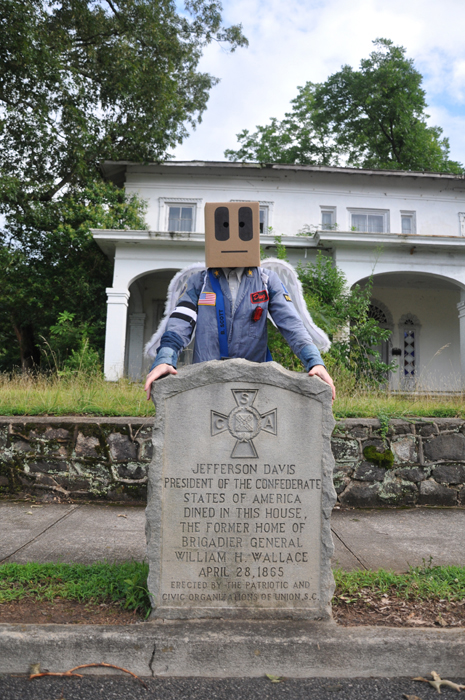
| Gen. Wallace was still away at war, but Mrs. Wallace and her neighbors served up a fine meal for the Confederate president and his pals. |
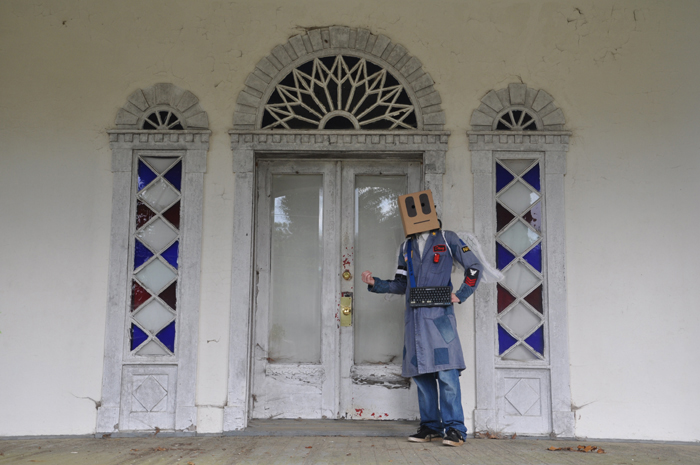
Davis, et al spent the night of April 28 at the home of Mrs. Giles, whose husband, Col. J. R. R. Giles, had been killed in action at the Battle of Seven Pines. The house stood about a mile from Rose Hill, the plantation of William Henry Gist. |
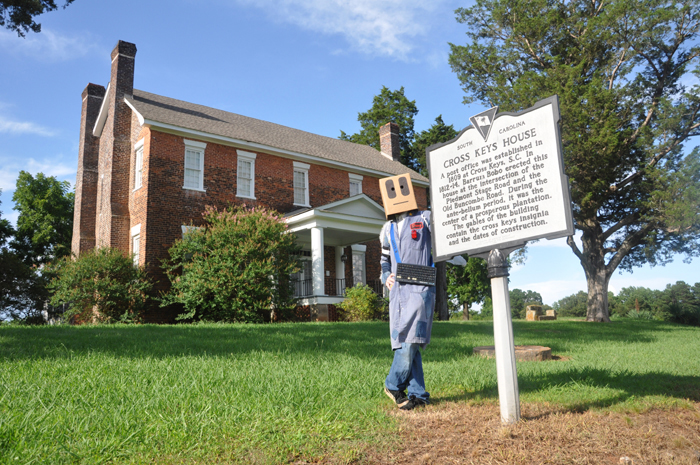
On April 30, 1865 Jefferson Davis and his retinue passed through Cross Keys, SC.
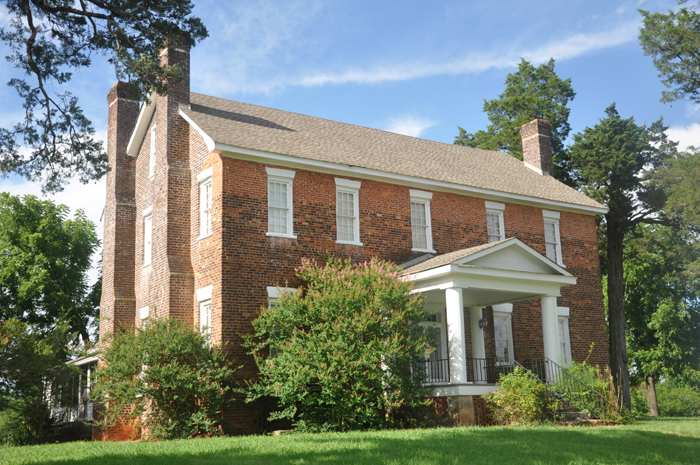
At the time of Davis' visit the home was owned by Mrs. Mary Whitmire Davis. The Cross Keys House had been built during the years 1812 - 1814 by Barrum Bobo. |
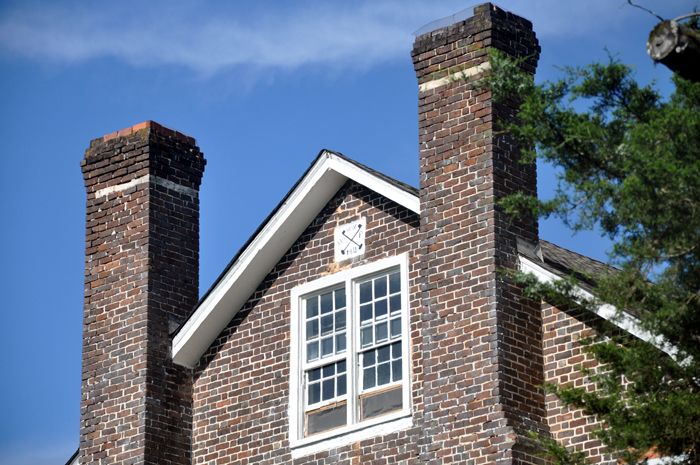
A date stone below the west gable lists the year that construction began, 1812, as well as the initials of the contractor who built the house, W. P. |
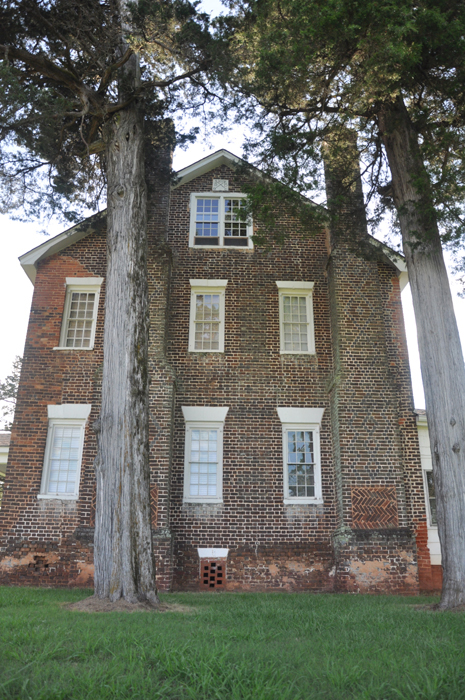
Under the east gable are Barrum Bobo's initials; the year of the house's completion, 1814;
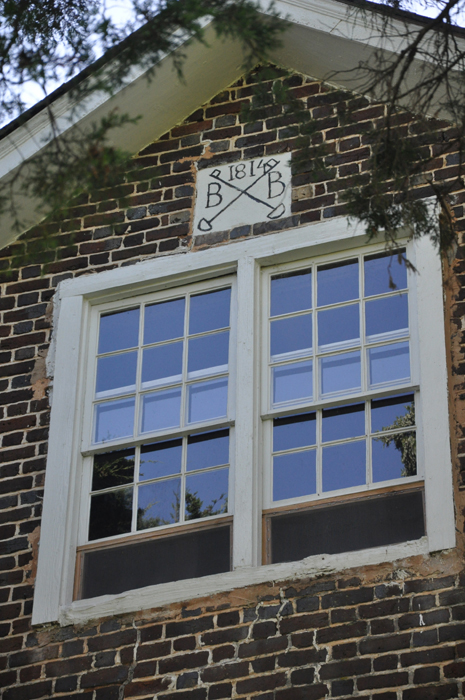
and a pair of crossed keys.

The Cross Keys house was built at what was then the intersection of the Piedmont Stage Road and the Old Buncombe Road. As such, the house was the perfect stop for travelers like Jefferson Davis. In front of the house are two old milestones that reveal the distance to Columbia (67 miles) and Union (12 miles). |
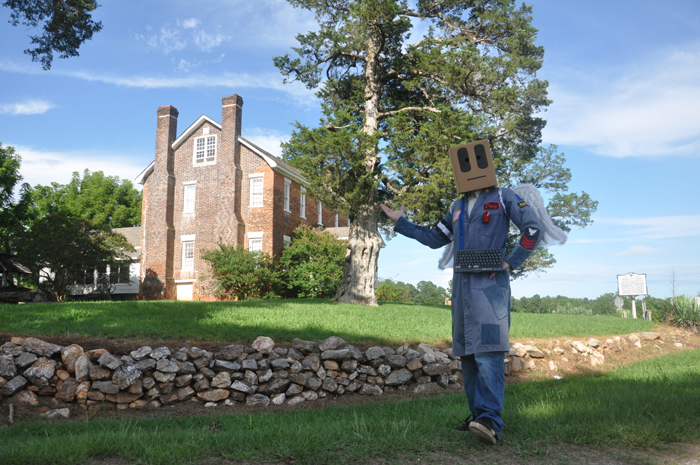
The house was damaged by two earthquakes, the Charleston Earthquake of 1886 and another in 1913.
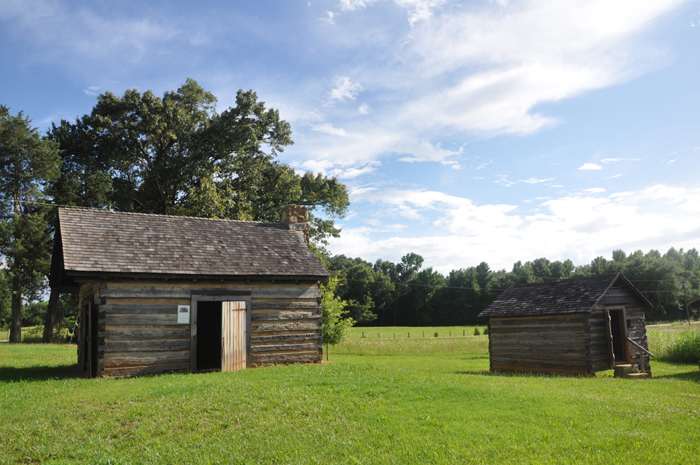
Also on the property is a blacksmith shop constructed of logs from a cabin built ~1823.
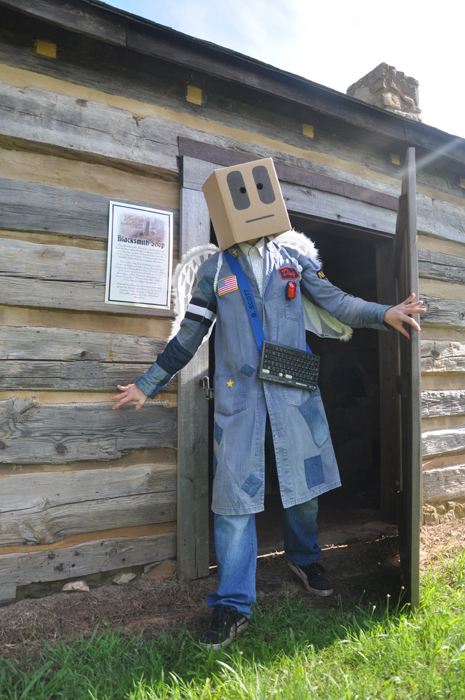
That cabin originally stood on a site known as Edwards Place, south of the City of Union.
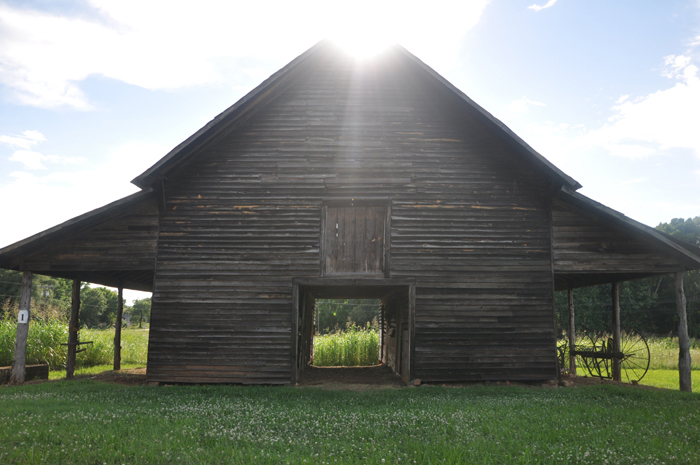
There are other buildings at the Cross Keys House...
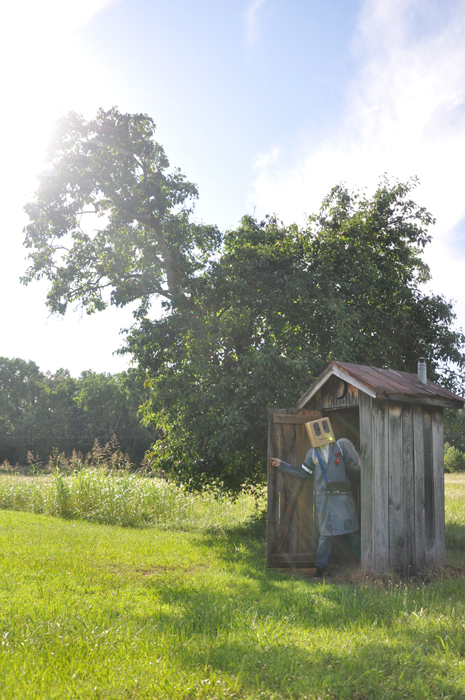
of which Slobot's favorite was the outhouse!
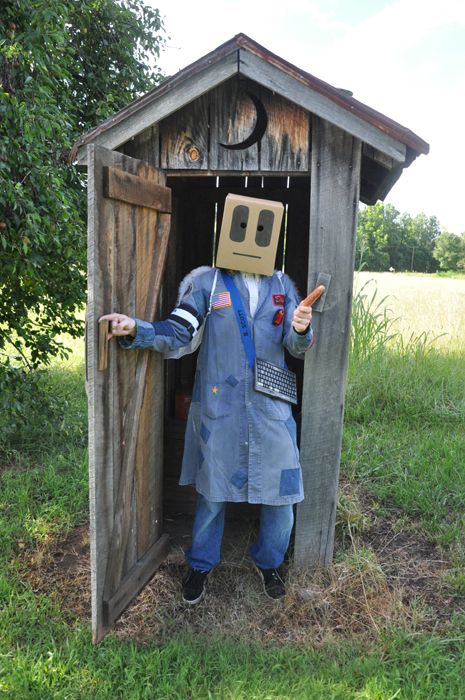
The outhouse even had corn cobs!
Stay tuned for The Flight of Jefferson Davis, pt. 02!
